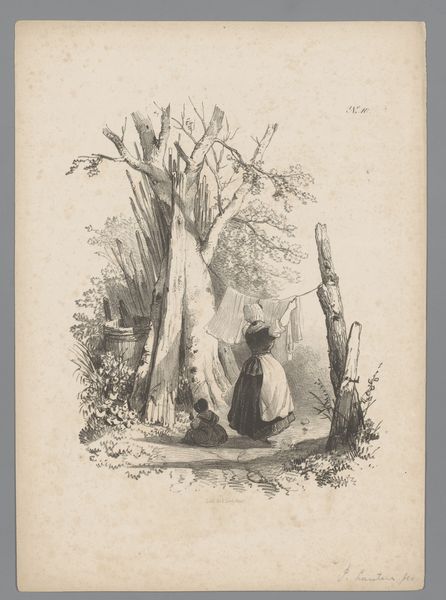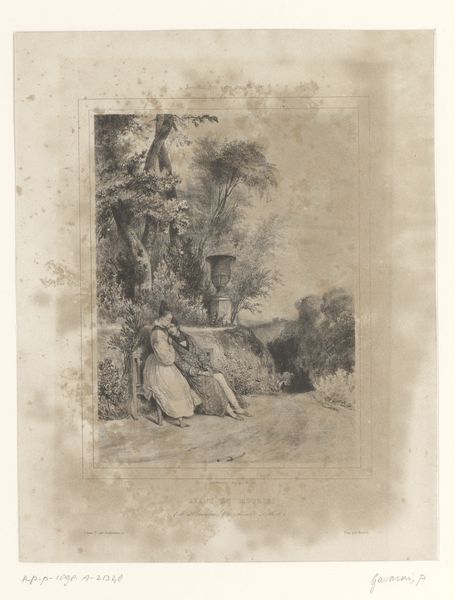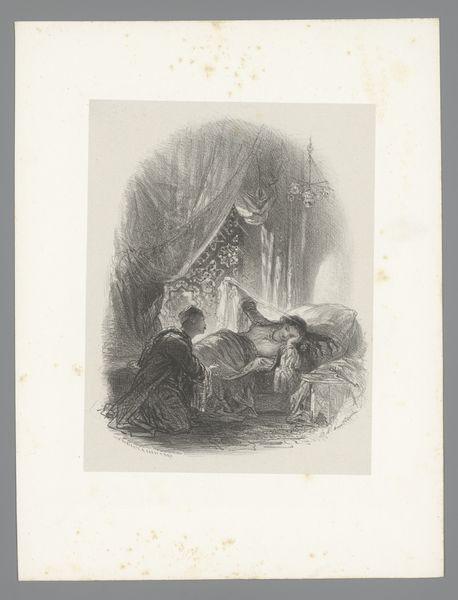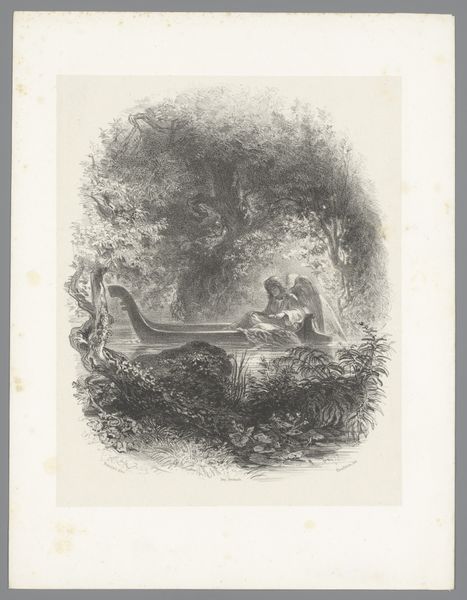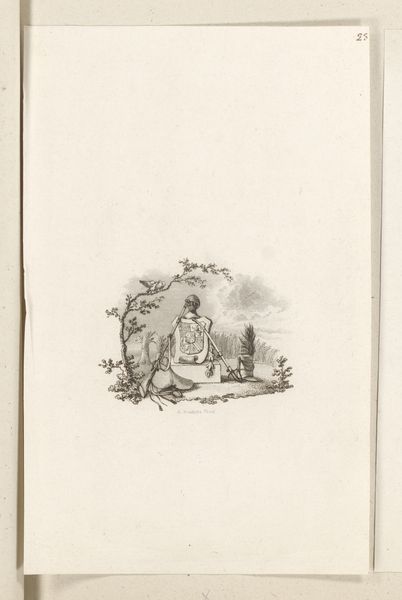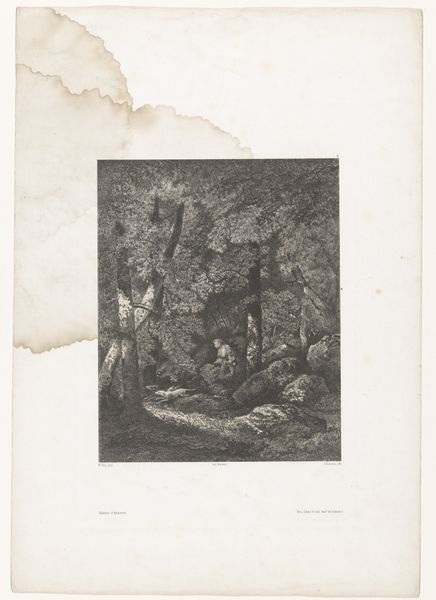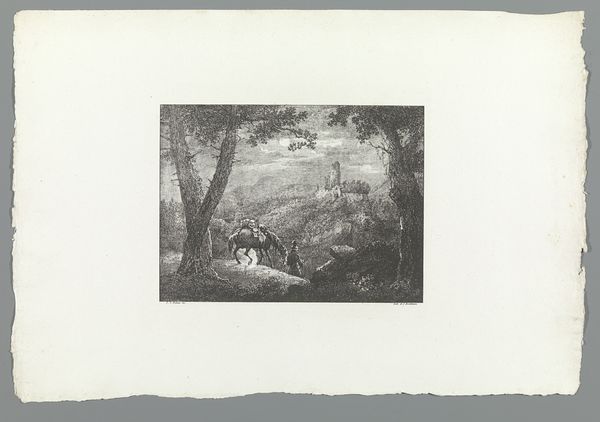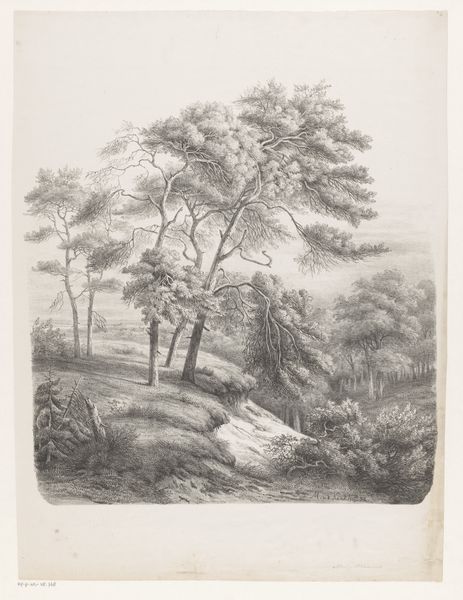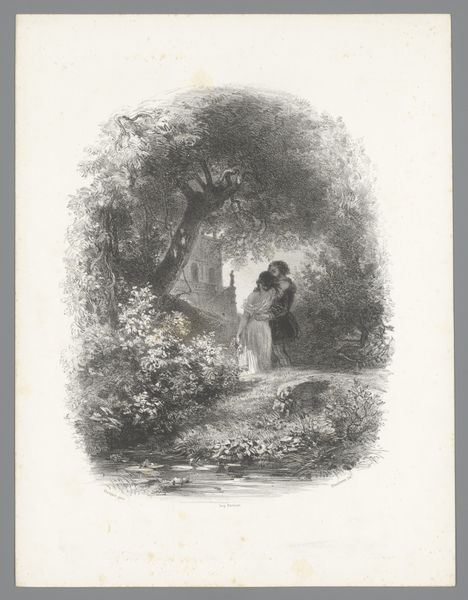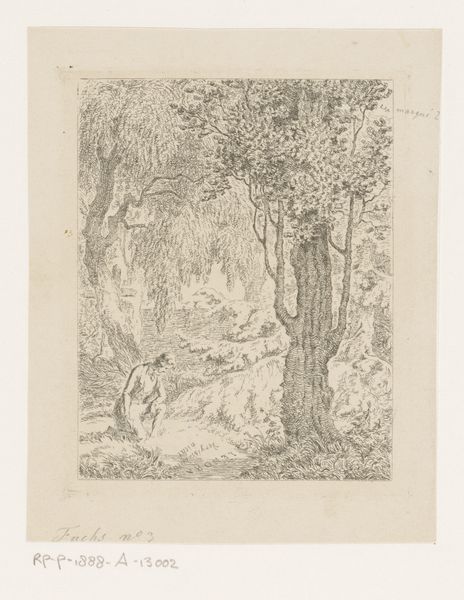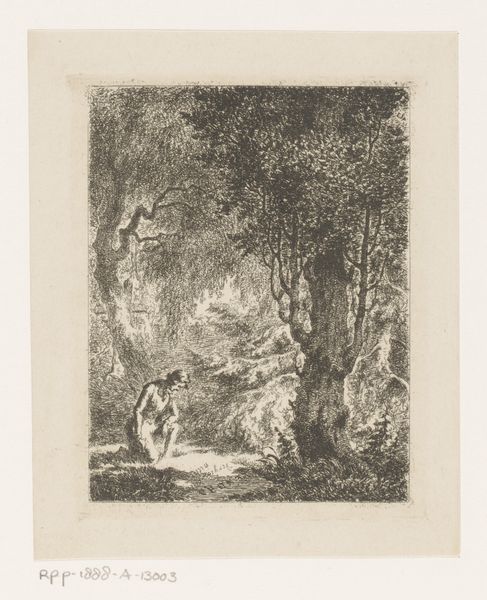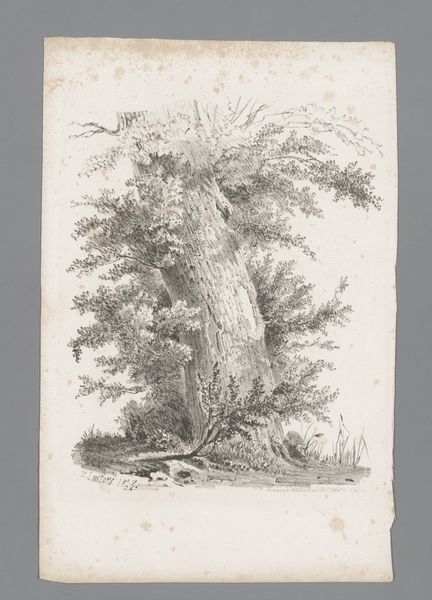
Dimensions: height 167 mm, width 100 mm
Copyright: Rijks Museum: Open Domain
Editor: Here we have an engraving from 1856, titled "Boy Chasing Birds in the Woods." It is housed in the Rijksmuseum. It’s quite monochromatic, and it strikes me as illustrating a fleeting moment of childhood. How do you interpret this work through a formalist lens? Curator: A good question. Note the stark contrast achieved through the engraving technique. This contrast sculpts the space, drawing our eye to the dynamic movement of the boy. Consider how the artist employs line and texture: densely packed lines create deep shadows within the forest, contrasting sharply with the smoother rendering of the boy's figure, effectively isolating him in this setting. How does this use of contrast influence your reading? Editor: It emphasizes the boy’s active presence against the static backdrop of the woods. His forward momentum is clear, but it also makes him seem somewhat alone within this larger, darker setting. Curator: Precisely. This isolation can be further examined through the composition's structure. Observe the visual weight: the density of the trees on either side framing the central action. Note also that the implied lines of his outstretched arms lead our vision toward the elusive birds, thus the whole work finds its coherence through vectorial analysis. Is it correct to claim then, that the focus is not so much on the boy, but rather the action of chasing itself? Editor: That's interesting, because it reframes my initial reading; rather than an image *about* the boy, it’s more an exploration of movement and pursuit. Now, considering it as pure composition, the dark backdrop throws the lighter shaded boy towards the foreground. Curator: Yes, the use of contrast further amplifies this pursuit within its environment and is indeed crucial. Without it, the scene would appear much flatter. What else captures your attention regarding the use of compositional elements such as depth or shading? Editor: Seeing the image this way changes my interpretation, revealing how line, form, and the action they show serve as the heart of the engraving, pushing beyond the literal depiction of a child. Thank you. Curator: Indeed. This analysis highlights how close visual reading can unlock deeper understandings of artistic intent, divorced from external narrative context.
Comments
No comments
Be the first to comment and join the conversation on the ultimate creative platform.
